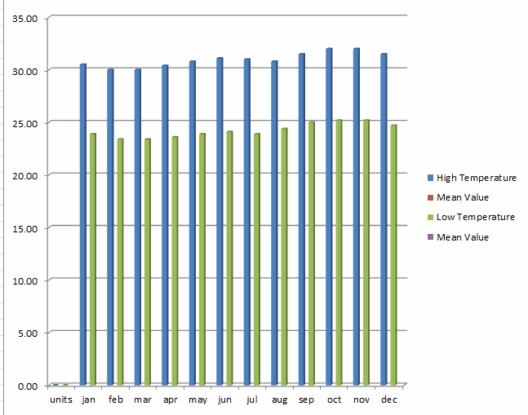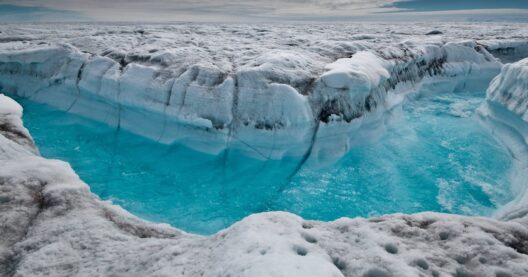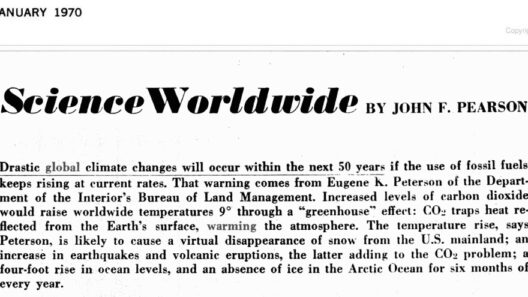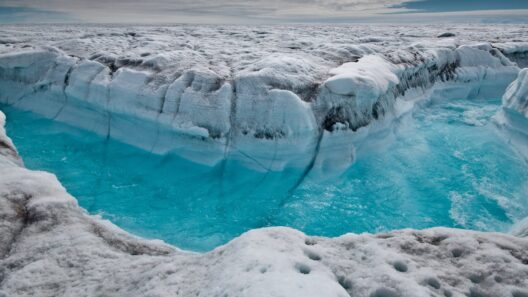In the tapestry of life, food chains represent intrinsic connections that bind organisms across ecosystems. However, this delicate web is increasingly under siege as global warming escalates, inducing a plethora of environmental changes that ripple through our agricultural landscapes. The implications for human consumption are profound and extend beyond mere fluctuations in temperature. Understanding the nuances of this strain on our food chains reveals critical insights into future food security and biodiversity preservation.
The first concern arises from the direct impacts of rising temperatures on agricultural productivity. Various crops, especially staple grains—such as wheat, rice, and corn—demonstrate increased vulnerability to heat stress. When the thermo-regulated equilibrium crucial for growth is disrupted, yields can plummet. Research shows that a mere increase of 1°C can lead to a noticeable decline in crop output. This phenomenon is exacerbated by erratic weather patterns, which can trigger droughts, floods, or unseasonal frosts. Consequently, the instability in crop production threatens food availability, driving prices upward and increasing the risk of food insecurity.
Moreover, global warming engenders shifts in precipitation patterns, altering the hydrological cycle. Regions traditionally known for their fertile soils may experience desertification, while others could face untenable flooding. This unpredictability not only affects crop cultivation but also triggers profound changes in local ecosystems. The flora and fauna that have evolved symbiotically with particular agricultural practices may no longer thrive, leading to the displacement of species. Reduced biodiversity diminishes ecosystem resilience, making it increasingly challenging to maintain agricultural output under fluctuating conditions.
In addition to terrestrial vegetation, aquatic food chains are increasingly strained due to rising temperatures and changing oceanic conditions. As water temperatures increase, the metabolic rates of aquatic organisms escalate, leading to higher oxygen consumption. This can precipitate hypoxic conditions, or “dead zones,” where aquatic life cannot survive. The impact of these changes extends to fisheries, which form the backbone of protein sources for billions of people worldwide. Many species of fish, such as cod and herring, are migrating towards cooler waters, prompting a recalibration of fishing zones and practices. Overfishing exacerbates this strain, making it imperative for management policies to adapt proactively.
Climate change-induced disruptions also extend to pollination, a fundamental aspect of many terrestrial food chains. Approximately three-quarters of the world’s food crops rely on pollinators such as bees, butterflies, and birds. As global temperatures rise, the lifecycle of these creatures is misaligned with flowering plants. Disruption in these interdependent relationships can result in reduced yields for fruits, vegetables, and nuts. Furthermore, pesticide usage can compound these adverse effects, leading to catastrophic declines in pollinator populations. The impending threat to pollination services underscores the urgency of protecting both ecosystems and agricultural viability.
The socio-economic implications of food chains under strain cannot be overstated. With diminishing harvests and collapsing fisheries, food prices are poised to rise. Vulnerable populations, particularly in low-income nations, are likely to be disproportionately affected. Malnutrition may become more prevalent as access to diverse diets diminishes, which can lead to adverse health outcomes, particularly for children. The intergenerational impacts of food insecurity thus perpetuate cycles of poverty and hinder socio-economic development.
Moreover, the agricultural sector itself is a significant contributor to greenhouse gas emissions, accounting for nearly 25% of total emissions globally. The increased pressure on resources will necessitate innovation in sustainable practices. For instance, regenerative agriculture, which focuses on restoring soil health and biodiversity, emerges as a promising solution. By harnessing techniques such as cover cropping, no-till farming, and integrated pest management, farmers can not only mitigate their environmental impact but can enhance resilience against the vicissitudes of climate change.
Adoption of alternative protein sources is another avenue worthy of exploration. Plant-based diets, insect protein, and lab-grown meats offer the potential to alleviate the strain on traditional livestock farming, which is a major source of methane emissions. Transitioning towards these alternative sources can mitigate the environmental burden while promoting healthier dietary habits. Given the growing consumer awareness around food sustainability, market demand for such innovations is likely to surge.
Investments in agroecological research and development are essential to equip farmers with the tools needed to navigate the challenges presented by climate change. Improved seed varieties that are resilient to heat and drought, along with advanced irrigation techniques, can significantly bolster productivity under adverse conditions. Moreover, community-based initiatives that empower local farmer cooperatives can foster collaboration and knowledge-sharing, leading to sustainable advancements in agricultural practices.
Ultimately, the strain on food chains induced by global warming is both a pressing issue and an opportunity for transformation. By acknowledging the interconnectedness of ecological and human systems, we can forge pathways toward resilience, sustainability, and food security. The challenge is significant, yet the imperative to adapt our agricultural practices is clear. This is not merely a matter of survival; it is an ethical responsibility to ensure that future generations inherit a livable planet, abundant with diverse food sources. The onus rests upon all stakeholders—governments, businesses, and consumers—to collectively drive the necessary changes that will safeguard our food chains against the ravages of climate change.








